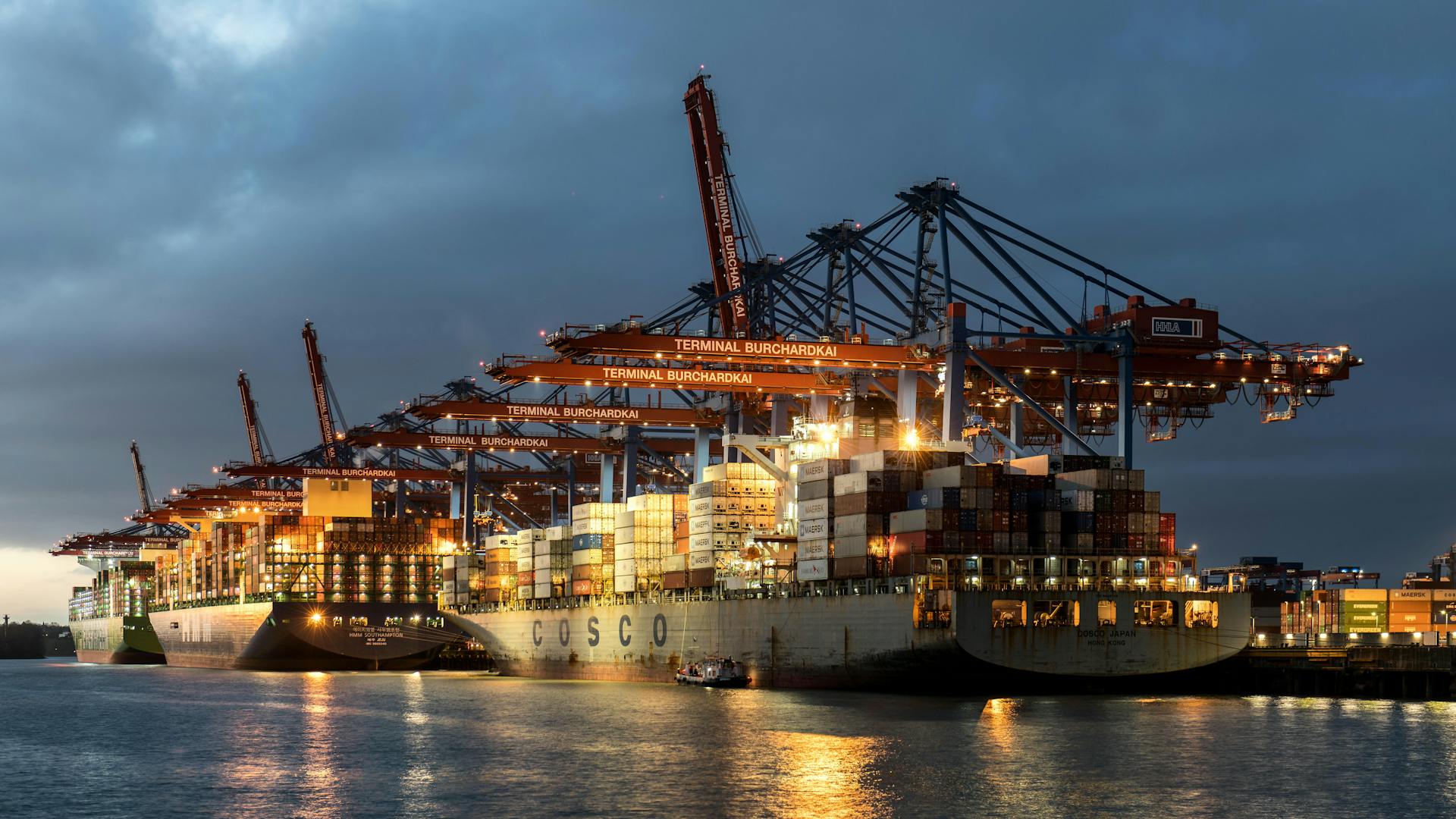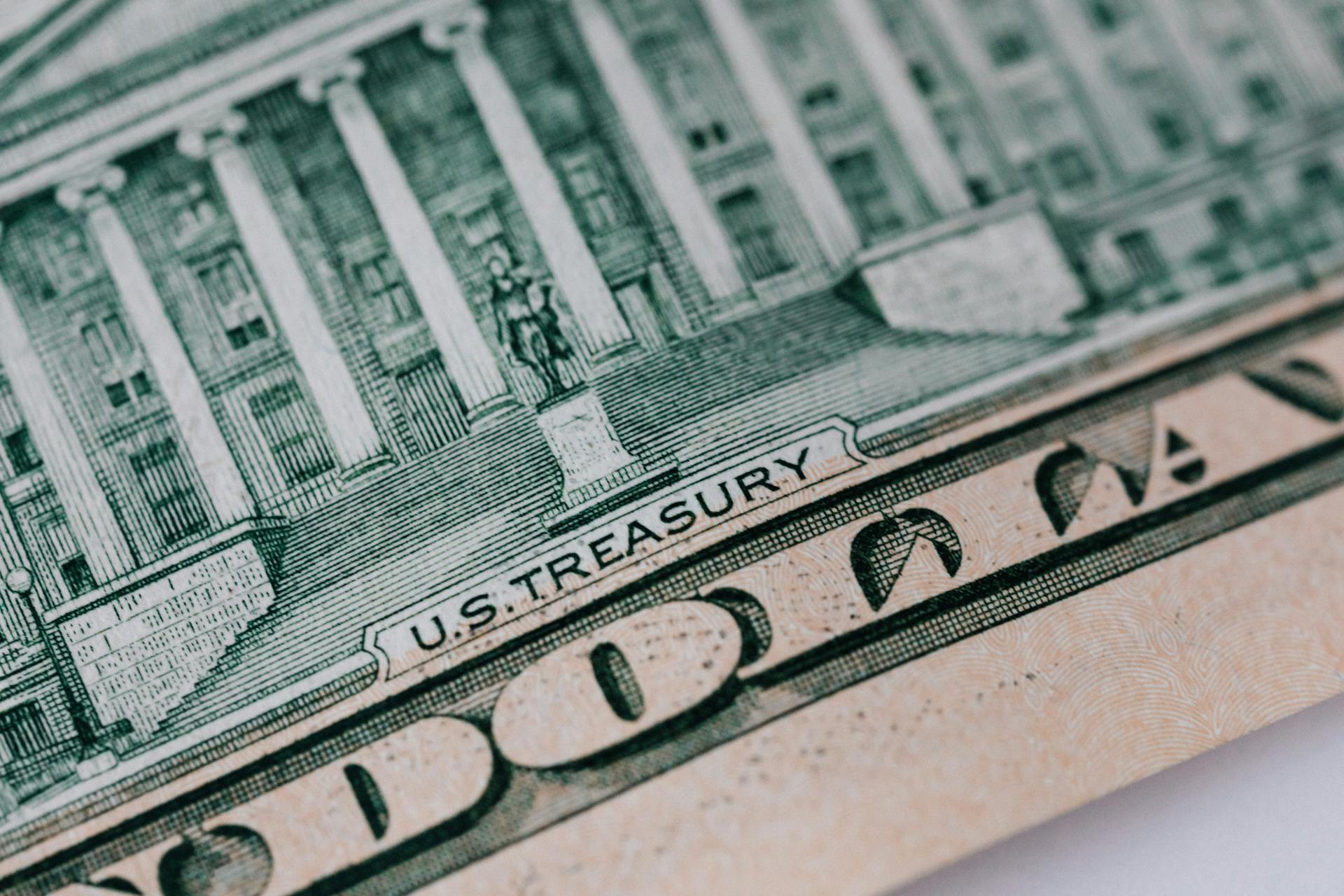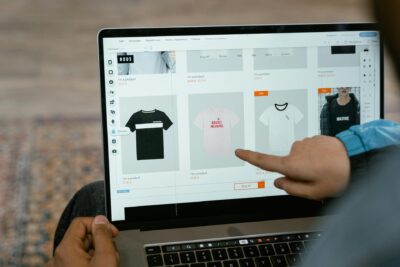Learn how Shopify merchants can survive the 2025 tariff wave. This guide covers tariffs, de minimis rules, Section 301, DDP vs. DAP shipping, and smart strategies to stay competitive in global ecommerce.
Key takeaways:
→ Tariffs are no longer background noise – they directly impact product costs, margins, and shipping times for Shopify merchants in 2025.
→ Smart merchants adapt by diversifying suppliers, adjusting pricing models, optimizing site performance, and communicating transparently with customers.
→ You can’t control trade policy but you can control your fulfillment strategy, product categories, and website speed to stay competitive in volatile global markets.
Feeling the pressure? You’re not alone
Running a Shopify store has always required a delicate balance – managing inventory, meeting customer expectations, staying on top of shipping, and somehow keeping your marketing alive.

Tariffs – Pressure
But in 2025, that balancing act is getting harder.
Tariffs, customs changes, and shifting trade agreements are no longer abstract headlines.
They’re showing up in your supply chain delays, your checkout totals, and your profit margins. What used to be background noise in global politics is now a daily operational challenge.
If you’re feeling the pressure, you’re not imagining it.
The rules are changing mid-game, and the impact is real.
But here’s the good news: you’re not stuck.
You still have tools, insights, and control over the areas that matter most: your sourcing, your fulfillment, your pricing, and your customer experience.
This guide is here to help you make sense of it all.
We’ll walk through what’s happening, what it means for your store, and how to adapt strategically without losing your edge or your sanity.
Because while you can’t control global trade policy, you can absolutely control how your business responds to it.
Let’s get into it.
What Are Tariffs and Why Should You Care?
Tariffs are taxes imposed by governments on imported goods.
They serve as a tool to regulate international trade, protect domestic industries, and generate revenue.

Tariffs – What is it
The Primary Objectives of Tariffs
- Revenue generation: Tariffs provide governments with a source of income, which can be used to fund public services and infrastructure.
- Protection of domestic industries: By making imported goods more expensive, tariffs encourage consumers to buy domestically produced products, supporting local businesses and jobs.
- Trade negotiation leverage: Tariffs can be used as a bargaining tool in international trade negotiations, compelling other countries to modify their trade practices.
Who Pays the Cost?
While tariffs are levied on foreign goods, the cost is typically borne by domestic importers and, ultimately, consumers.
Importers pay the tariff at the border and often pass the increased costs onto consumers through higher prices.
How Tariffs Are Collected
Tariffs are collected by customs authorities at the point of entry.
Importers are responsible for declaring the value and classification of goods, upon which the appropriate fee is calculated and paid before the goods are released into the domestic market. 
Recognizing Different Types of Tariffs
- Sector-specific: Targeted at particular industries, such as steel or agriculture, to protect domestic production in those sectors.
- Anti-dumping duties: Imposed when a country exports a product at a price lower than its domestic market, potentially harming the importing country’s industry.
- Most Favored Nation (MFN) rates: Standard tax rates that a country applies to its trading partners under World Trade Organization agreements, ensuring non-discriminatory trade practices.
The Role of Reciprocal Tariffs and Trade War Escalation
Reciprocal tariffs occur when countries impose similar tariffs on each other’s goods, often leading to trade disputes or wars.
For instance, in recent years, the U.S. and China have engaged in a series of tariff exchanges, affecting various industries and leading to increased costs for businesses and consumers.
What Is Section 301 and Why Is It Haunting Your Product Margins?
Section 301 of the U.S. Trade Act of 1974 authorizes the U.S. Trade Representative to investigate and respond to foreign trade practices deemed unfair.
In recent years, this provision has been used to impose tariffs on a wide range of Chinese goods, impacting businesses that rely on imports from China and leading to increased costs and supply chain adjustments.
De Minimis Demystified
The $800 loophole that once gave small merchants breathing room is closing fast, and it’s about to reshape your shipping strategy.

Tariffs – De Minimis
What’s the de minimis rule, and why is it suddenly a problem?
The de minimis rule allows low-value imports to enter a country without incurring tariffs or undergoing detailed customs procedures.
In the U.S., the threshold is $800, meaning goods valued below this amount typically avoid duties, speeding up ecommerce transactions and lowering costs.
This rule has historically benefited Shopify merchants, especially those dropshipping small, inexpensive items from abroad. It reduced friction in international sales and helped avoid the cost and complexity of customs processing.
New changes: US eliminating de minimis exemptions
As of 2024–2025, pressure has mounted in the U.S. to curb this exemption, especially for Chinese-origin goods, citing misuse of the rule and rising concerns over fentanyl imports and trade imbalances.
The proposed legislation (e.g., the Import Security and Fairness Act) would eliminate the $800 de minimis exemption for goods shipped from non-market economies like China.
This means that even inexpensive goods from these regions will now be subject to tariffs, customs declarations, and longer processing times.
How US-China trade tension is disrupting ecommerce flows
This shift is part of a broader US-China trade strategy involving Section 301 tariffs, increased scrutiny of shipments, and a growing preference for domestic or allied sourcing.
- Importers relying on AliExpress, Temu, or similar platforms are seeing higher fees and shipping delays.
- Some Chinese sellers have been found under-declaring values to exploit the $800 threshold, prompting further enforcement crackdowns.
The economic ripple effects
Expect impacts in several areas:
- Supply chain disruption as merchants move away from China to avoid fees and delays
- Cost increases on low-margin products, especially in electronics and accessories
- Pressure on pricing models, especially for stores built on thin dropshipping margins
- Greater need for compliance infrastructure, including invoice accuracy, HS code assignment, and DDP shipping labels
Who’s Getting Hit? Industries Affected in 2025 US Tariff Changes
Not all product categories are impacted equally; some are getting hit harder, faster, and with higher costs than others.

Tariffs – Affected industries
Electronics
The electronics sector is among the hardest hit in the 2025 US tariff wave.
Products such as smartphones, wearable tech, chargers, and smart home accessories face elevated duties, particularly if any component originates from China, Vietnam, or other high-surveillance supply chains.
- U.S. Tariffs on Chinese electronics under Section 301 remain in effect, with expanded scope in 2025.
- Key inputs like printed circuit boards (PCBs), lithium batteries, and LEDs now carry tariffs of up to 25%.
- Merchants importing electronics via AliExpress, Alibaba, or direct wholesale channels should expect customs declarations, HS code classification, and extra duty collection at checkout.
Source: USTR 2024–2025 Section 301 Review
Apparel
Clothing and textile imports are under pressure from tax hikes and the shrinking of de minimis loopholes. China and Bangladesh, major apparel exporters, face tougher restrictions in 2025.
- Taxes on cotton, synthetic fibers, and blended fabrics now range between 16% and 46%, depending on classification.
- Expect margin compression on fast-fashion SKUs and seasonal collections.
- Shopify stores using print-on-demand services or overseas garment manufacturers should reassess their pricing models and consider U.S.-based 3PL apparel printers for fulfillment.
Home Goods
Furniture, lighting, and home decor items are quietly absorbing higher duties due to changes in classification and origin-specific policies.
- Composite wood products, metal fixtures, and ceramic goods face both tariffs and non-tariff barriers related to materials and safety compliance.
- The U.S. International Trade Commission continues to uphold anti-dumping duties on certain home goods, especially metal-based furniture and shelving.
- Dropshipped decor items from non-market economies are now less price-competitive due to increased shipping inspection and tax application.
What This Means for Shopify Store Owners
Tariffs don’t just live on spreadsheets — they show up in your inventory, pricing, and customer experience.

Tariffs – Shopify effect
Inventory Delays
With more goods now subject to tariffs and detailed customs scrutiny, international shipments are slowing.
- Customs clearance times are increasing, especially for goods coming from China or other tariff-impacted regions.
- Stores using just-in-time inventory models may find themselves out of stock during peak sales cycles.
- Shopify stores should consider lead-time buffers or shift fulfillment to regional 3PLs where possible.
Higher Product Costs
Tariffs directly impact landed cost, especially when combined with higher freight rates and fuel surcharges.
- A product that previously cost $5 to import may now incur an additional 15–25% duty, depending on origin and category.
- As per the Tax Foundation, U.S. consumers and businesses absorbed nearly 100% of the cost of 2018–2023 tariffs – 2025 will follow suit.
- Merchants must factor in customs valuation, HS code accuracy, and brokerage fees when calculating per-unit margins.
Price Adjustments Needed
As costs rise, pricing will need to evolve.
- Static pricing strategies may become unsustainable, especially for low-margin goods.
- Store owners should consider dynamic pricing apps, regional price lists, or even geo-specific shipping thresholds in Shopify.
- Use Shopify’s Markets tool to separate pricing logic by country or region, factoring in local taxes and duties.
Shipping Hiccups
Tariff changes have created a domino effect in logistics.
- Some carriers are increasing handling fees or requiring more detailed customs documentation to process international orders.
- Fulfillment services may pass on “duty reconciliation charges” or “compliance surcharges.”
- Shopify stores using Delivered Duty Paid (DDP) shipping will need to stay updated on rates and be ready to absorb or pass on unexpected fees.
What You Can Actually Do About It
While you can’t stop tariffs from happening, you can respond with smarter sourcing, better forecasting, and tighter operations.

Tariffs – Plan ahead
How to Calculate and Plan for Tariffs
Find the right Harmonized System (HS) code
Correct HS codes are the foundation of any tariff strategy.
Every product imported into the U.S. must be classified under a Harmonized System code, which determines the duty rate.
Using an incorrect code can result in overpaying fees, or worse, underpaying and getting slapped with fines later.
The code should reflect the actual composition and use of your product.
Shopify Action Steps:
- Reference the U.S. International Trade Commission’s HTS Lookup Tool
- Store the HS code in your product metafields for cross-border checkout
→ Admin > Settings > Custom data > Products
Estimate duty rates accurately
Once you have your HS code, you can calculate costs by referencing the duty rate, product value, and country of origin.
This gives you the real landed cost of the item, not just the vendor price. If you’re importing from countries subject to Section 301 tariffs, rates could range from 10–25%.
Shopify Action Steps:
- Use a landed cost calculator like SimplyDuty or DutyCalculator
Enable duties and import taxes in Shopify Markets to auto-apply rates at checkout
→ Admin > Settings > Markets > Duties and import taxes
Build tariff costs into your pricing model
Tariff costs need to be baked into your pricing.
If you’re still setting prices based on supplier cost and ignoring customs fees, you’re sabotaging your own margins. Consider applying a percentage-based tax buffer or bundling it into your handling fees.
Shopify Action Steps:
- Use Shopify’s Cost per Item field for real landed cost tracking
- Revisit pricing rules in Shopify Markets or use A/B testing via apps like Intelligems
→ Admin > Products > [Product] > Cost per item
Use a Checklist for USMCA compliance
If you’re importing or exporting within North America, the US-Mexico-Canada Agreement (USMCA) offers tax exemptions, if you follow the rules.
That includes country-of-origin documentation, correct invoicing, and recordkeeping.
Shopify Action Steps:
- Attach country-of-origin certificates or declarations to B2B orders
- Save USMCA-compliant documents in your customer/order profiles
→ Use apps like Avatax, Zonos, or FedEx Trade Manager for automation
Why professional invoices matter (a lot)
Sloppy invoices = customs delays.
Accurate commercial invoices are required for international shipping, and they must include product descriptions, declared value, HS code, and country of origin.
Tariff misclassification often starts with vague paperwork.
Shopify Action Steps:
- Use Shopify’s default commercial invoice template (customizable via code or app)
- Integrate shipping apps like Easyship or Zonos to automate invoice creation
→ Admin > Orders > Print > Packing slip/custom invoice
Smarter Fulfillment and Supply Chain Tactics
Switching to US-based or regional 3PLs
Fulfillment centers inside the U.S. or near key customer zones help reduce customs complications and absorb the impact.
Regional 3PLs also speed up delivery and improve customer experience. They can bulk-import products for you and store them tariff-cleared.
Shopify Action Steps:
Connect 3PLs like ShipBob, Deliverr, or Red Stag Fulfillment via Shopify apps
- → Apps > Fulfillment > Search 3PLs
- → Admin > Settings > Locations to manage warehouse routing
Supplier diversification by trade region
Suppliers in lower-tariff zones offer risk reduction and faster customs clearance.
This isn’t just a pricing move; it’s strategic defense. Establishing alternate suppliers gives you leverage in cost negotiations and resilience during geopolitical upheaval.
Shopify Action Steps:
Use supplier directories like Faire, Handshake, or Anvyl to find new sourcing partners
- → Apps > Supplier Sourcing
- → Add internal supplier tags to products for tracking
Manufacturing relocation options
If you own your manufacturing or have influence over your vendors, shifting production to countries with trade agreements (e.g., Vietnam, Mexico) can cut costs and simplify logistics.
It’s a longer play, but a high-ROI one.
Shopify Action Steps:
- Use product metafields or tags to track production origin
- Coordinate fulfillment from your new manufacturer’s location
→ Admin > Products > Metafields
Leverage bilateral agreements for savings
Countries with Free Trade Agreements (FTAs) may offer tax reductions or exemptions.
USMCA is just one example. Others include U.S.–Korea, U.S.–Australia, and agreements through CAFTA.
If your product qualifies under a treaty, you may be able to zero out import duties.
Shopify Action Steps:
- Track tariff classification and origin status on a per-product basis
- Provide documentation through your shipping service or customs broker
→ Admin > Products > Custom data or use invoice generation apps
Strategic Shipping: DDP vs. DAP
When to choose Delivered Duty Paid (DDP)
DDP means you’re paying the duties and taxes so your customer doesn’t get hit with surprise charges.
This approach improves customer experience, especially for international buyers, and is ideal if you want to keep post-sale support minimal.
Shopify Action Steps:
- Enable “Prepay duties” in your shipping app (e.g., Easyship, Zonos)
- Clarify DDP terms in your shipping policy page
→ Admin > Settings > Shipping and delivery
When to use Delivered at Place (DAP)
DAP shifts responsibility for duties and taxes to the customer.
It’s simpler on your end but riskier for cart abandonment and customer satisfaction. Best used for high-ticket B2B orders or in regions with stable, transparent customs policies.
Shopify Action Steps:
- Communicate clearly at checkout: “Import duties may apply”
- Add DAP messaging to product pages and post-purchase emails
→ Admin > Settings > Notifications
Managing duties and taxes with Shopify’s built-in tools
Shopify Markets offers built-in duties and tax collection for select countries.
When configured properly, it auto-calculates fees based on HS code and origin, giving customers transparent costs upfront.
Shopify Action Steps:
- Enable duties and import taxes in Markets settings
- Match products with accurate HS codes and country of origin
→ Admin > Settings > Markets > Duties and import taxes
→ Admin > Products > Metafields
Adapting Your Business Model
Optimizing pricing strategy without alienating customers
When tariff costs start creeping into your margins, you can’t just slap on a 20% markup and call it a day.
Pricing needs to be adjusted strategically, not reactively.
Consider tiered pricing, bundling, or value-based pricing that emphasizes quality over quantity.
A sudden blanket price increase will alienate customers, but small, justified adjustments combined with messaging around increased supply chain costs can help you maintain trust and profit.

Tariffs – Adaption
Using transparency to build trust
Today’s customers aren’t just price-sensitive; they’re context-sensitive.
If you’re facing delays, increased costs, or have to pivot products due to tariff restrictions, tell them.
Add an FAQ section addressing shipping delays and tariff-related price changes. Post updates on product pages, in confirmation emails, and even in your “About Us” story.
You’re not just selling products anymore, you’re selling resilience. Let them know what’s going on, and they’ll be more forgiving.
Pivoting product categories to avoid high tariffs
If your entire store revolves around a category that’s getting annihilated by sector-specific tariffs (hi, electronics and textiles), it might be time to expand or shift into safer territory.
Products with domestic supply chains or components from low-tariff countries will save you the headache and cost.
Look for categories that are lighter on duty rates – home goods, accessories, digital products (if applicable), or private-label alternatives sourced regionally.
Navigating non-tariff barriers and export quotas
Tariffs are just the flashy headline.
Behind them lurk non-tariff barriers like import licensing, customs delays, packaging regulations, and export quotas—especially in tightly regulated markets like the EU or Canada.
These obstacles can choke your supply chain or block your product at the border, even if no tariff is technically applied.
Do your homework on each market’s compliance requirements, especially if you sell in regulated categories like food, cosmetics, or electronics.
The Role of Website Optimization in Mitigating Tariff Impact
When product costs rise, your site needs to work harder to convert; speed and UX become critical tools, not just nice-to-haves.

Tariffs – The role of website optimization
How faster load times protect conversion rates
When customers see higher product prices or longer delivery estimates, the last thing you want is for your site to take 5 seconds to load.
Speed isn’t just a nice-to-have; it’s a margin-preserving weapon.
According to a report, conversion rates drop by more than 4% with every additional second of load time between 0 and 5 seconds.
In a tariff-heavy world where you’re already fighting for every sale, site speed becomes a direct defense against bounce rates and abandoned carts.
How fast is your Shopify store?
Compare how fast your store is to a huge sample of other stores. Get benchmarked and find out where you can improve your speed to make more sales.
Improving site UX when product prices rise
If you’re forced to increase prices due to import taxes or duty fees, your site experience needs to pick up the slack.
Focus on simplifying navigation, showcasing social proof, and removing friction from the checkout process.
Reinforce value with rich product descriptions, trust badges, clear shipping policies, and even post-purchase upsells.
A smoother shopping experience helps justify a higher price point, especially when it’s paired with transparency and perceived value.
Staying Positive in a Tariff-Shaped Market
You’re not powerless; just facing new challenges (and slightly taxed to death).

Tariffs – Stay positive
Tariffs are frustrating.
They’re messy, bureaucratic, and strategically vague.
But as a Shopify merchant, you’re not stuck.
You have tools, data, and access to new markets. You’re only powerless if you pretend nothing has changed.
Spoiler: it has.
Control the controllables: speed, clarity, and supply chain agility
You can’t predict what the next round of tariff announcements will hit, but you can update your shipping strategy, diversify your sourcing, and make your site feel seamless even when prices rise.
Controlling what you can – your fulfillment model, your load time, your customer communication – keeps you in the game.
Adaptation = survival. Shopify merchants are scrappy like that.
Adapt or die isn’t just a tech cliché.
It’s ecommerce truth.
The merchants who survive tariff cycles are the ones who stay flexible, update quickly, and make smart decisions faster than their competition.
You don’t have to be perfect; you just have to stay two moves ahead.
Tariffs may raise the stakes, but they don’t write your ending.
With smart adjustments, sharper operations, and a site that runs at full speed, your store can stay competitive – no matter what the trade winds blow in next.
Stay agile. Stay informed. Keep selling.
How fast is your Shopify store?
Compare how fast your store is to a huge sample of other stores. Get benchmarked and find out where you can improve your speed to make more sales.
Frequently Asked Questions
What are tariffs and how do they affect my Shopify store?
Tariffs are import taxes that increase the cost of foreign goods. They impact Shopify stores by raising product prices, affecting margins, and causing supply chain disruption, especially in high-risk categories facing sector-specific tariffs or anti-dumping duties.
What is Section 301 and why does it matter for ecommerce sellers?
Section 301 allows the U.S. to impose tariffs on countries with unfair trade practices. For Shopify merchants, it’s led to higher costs on Chinese imports, altering sourcing strategies and increasing exposure to trade policy volatility and customs valuation risks.
How do de minimis rules affect my international orders?
De minimis rules let imports under a set value (e.g., $800 in the U.S.) bypass import taxes. Changes in de minimis thresholds can trigger unexpected costs, especially for low-cost goods, complicating pricing and increasing customs regulations compliance needs.
What are reciprocal tariffs and how do they impact my sourcing strategy?
Reciprocal tariffs are retaliatory measures imposed between trading partners. They can raise costs for products from specific countries, especially in the context of US-China trade, forcing merchants to explore import substitution or manufacturing relocation.
How can I calculate the tariff cost for a product?
To calculate tariff costs, identify the correct HS code, country of origin, and product value. Use these with MFN rates or sector-specific tariffs to determine duty owed. Be precise—errors in customs valuation can result in penalties or delays.
What is the economic impact of tariffs on small ecommerce businesses?
Tariffs can shrink profit margins, increase retail prices, and trigger supply chain disruption. For small ecommerce sellers, they raise operational costs, complicate trade facilitation, and demand more agile sourcing and pricing strategies to stay competitive.
Can bilateral agreements help reduce my tariff exposure?
Yes, bilateral agreements like USMCA may reduce or eliminate import taxes if products meet rules of origin criteria. They support trade adjustment strategies and minimize costs, especially for goods previously affected by trade remedy cases or export quotas.
Should I consider moving suppliers to avoid tariffs?
Yes, manufacturing relocation to countries with favorable trade negotiations or lower tariff exposure can reduce costs. It’s a common response to trade war escalation, sector-specific tariffs, and other non-tariff barriers impacting global markets.
How do anti-dumping duties differ from regular tariffs?
Anti-dumping duties are imposed when foreign goods are sold below market value, harming domestic industries. Unlike general tariffs or MFN rates, these are specific penalties often tied to trade remedy cases and customs investigations.
What steps can I take to prepare for trade policy volatility?
Diversify suppliers, build inventory buffers, monitor customs regulations, and adjust pricing dynamically. These steps reduce exposure to trade deficit pressures, supply chain disruption, and future shifts in global trade policy or fentanyl restrictions enforcement.



